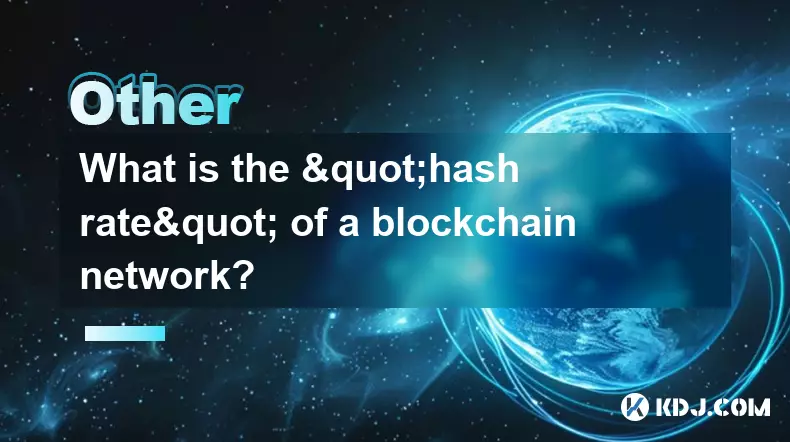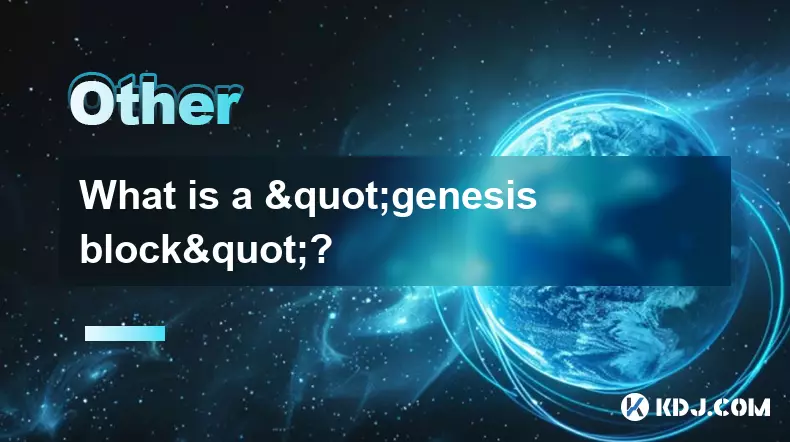-
 bitcoin
bitcoin $99177.955738 USD
-7.32% -
 ethereum
ethereum $3187.183061 USD
-12.38% -
 tether
tether $0.999809 USD
0.00% -
 xrp
xrp $2.117933 USD
-9.42% -
 bnb
bnb $906.710033 USD
-9.17% -
 solana
solana $149.367737 USD
-10.74% -
 usd-coin
usd-coin $0.999816 USD
0.01% -
 tron
tron $0.281498 USD
-0.38% -
 dogecoin
dogecoin $0.156292 USD
-8.00% -
 cardano
cardano $0.500744 USD
-10.19% -
 hyperliquid
hyperliquid $38.087358 USD
-4.58% -
 chainlink
chainlink $14.097831 USD
-8.54% -
 bitcoin-cash
bitcoin-cash $463.329916 USD
-9.22% -
 ethena-usde
ethena-usde $0.999078 USD
-0.01% -
 unus-sed-leo
unus-sed-leo $9.475862 USD
-0.79%
What are the key features of blockchain?
Blockchain ensures security and trust through decentralization, immutability, and cryptography, enabling transparent, tamper-proof transactions without intermediaries.
Aug 05, 2025 at 04:15 pm

Decentralization and Its Role in Blockchain Infrastructure
One of the most fundamental aspects of blockchain technology is decentralization. Unlike traditional financial systems that rely on a central authority such as a bank or government, blockchain operates on a peer-to-peer network where every participant, or node, maintains a copy of the entire ledger. This ensures that no single entity has control over the entire system, reducing the risk of manipulation or failure. Each node validates and records transactions independently, contributing to a trustless environment. When a new transaction is initiated, it is broadcast across the network. Nodes then verify the transaction using consensus mechanisms before it is added to a block. The absence of a central authority enhances transparency and resilience, making the system less vulnerable to attacks or systemic collapse.
Immutability and Data Integrity
A defining characteristic of blockchain is immutability, meaning once data is recorded on the blockchain, it cannot be altered or deleted. This is achieved through cryptographic hashing. Each block contains a unique hash of its own data, as well as the hash of the previous block, forming a chain. If someone attempts to change a transaction in a past block, the hash of that block will change, which invalidates all subsequent blocks. This would require recalculating the hashes for every block in the chain, a process that is computationally infeasible in large, established blockchains. This level of data integrity ensures that transaction histories are permanent and tamper-proof, making blockchain ideal for applications requiring audit trails, such as supply chain tracking or financial recordkeeping.
Transparency and Pseudonymity
Blockchain networks offer a high degree of transparency. Every transaction is recorded on a public ledger that is accessible to all participants in the network. Anyone can view the transaction history, including the amount transferred and the addresses involved. However, user identities are not directly exposed. Instead, participants interact through cryptographic addresses, which appear as random strings of characters. This provides pseudonymity—a balance between openness and privacy. While transaction details are visible, linking an address to a real-world identity typically requires external information. This transparency fosters trust among users, as all actions are verifiable, while pseudonymity protects individual privacy, a critical feature in financial and personal applications.
Consensus Mechanisms: Ensuring Agreement Across Nodes
For a blockchain to function correctly, all nodes must agree on the validity of transactions. This is achieved through consensus mechanisms. The most widely known are Proof of Work (PoW) and Proof of Stake (PoS). In PoW, used by Bitcoin, miners compete to solve complex mathematical puzzles. The first to solve it gets to add a new block and is rewarded with cryptocurrency. This process requires significant computational power and energy but ensures security. In PoS, validators are chosen based on the amount of cryptocurrency they 'stake' as collateral. They propose and validate blocks, and if they act dishonestly, they lose their stake. Other mechanisms include Delegated Proof of Stake (DPoS) and Practical Byzantine Fault Tolerance (PBFT), each with different trade-offs in speed, security, and decentralization. These protocols are essential for maintaining network integrity without a central authority.
Smart Contracts and Programmable Logic
Another key feature of certain blockchains, particularly Ethereum, is the ability to execute smart contracts. These are self-executing programs stored on the blockchain that automatically enforce the terms of an agreement when predefined conditions are met. For example, a smart contract could release payment to a freelancer only after a client confirms project completion. The code runs exactly as programmed, without downtime, censorship, or third-party interference. Developers write smart contracts using languages like Solidity. Once deployed, they cannot be altered, ensuring reliability. These contracts enable decentralized applications (dApps) across finance, gaming, and identity management. Their execution is transparent and verifiable by all network participants, adding another layer of trust and automation to blockchain ecosystems.
Distributed Ledger and Network Resilience
The distributed ledger is the backbone of blockchain technology. Instead of storing data in a single location, the ledger is replicated across thousands of nodes worldwide. When a new block is added, it is propagated across the network and independently verified by each node. This redundancy ensures that even if some nodes go offline or are compromised, the network continues to operate. There is no single point of failure. Updates to the ledger occur simultaneously across all copies, maintaining consistency. This structure enhances security and uptime. In the event of an attack, attackers would need to compromise a majority of the nodes simultaneously—a feat that is highly impractical in large, decentralized networks. The distributed nature also supports censorship resistance, as no single entity can block or reverse transactions.
Cryptography and Security Protocols
Blockchain relies heavily on cryptography to secure data and authenticate users. Public-key cryptography is used to generate wallet addresses and sign transactions. Each user has a private key and a public key. The private key must be kept secret, as it allows the owner to spend their cryptocurrency. The public key, derived from the private key, is shared openly and forms part of the wallet address. Digital signatures ensure that only the rightful owner can initiate transactions. Hash functions, such as SHA-256, secure the integrity of blocks by creating unique fingerprints of data. Any change in input results in a completely different hash, making tampering evident. These cryptographic tools work together to create a secure, trustless environment where users can transact without needing to know or trust each other.
Frequently Asked Questions
Q: How does decentralization prevent fraud in blockchain?Decentralization prevents fraud by distributing control across many nodes. To alter transaction data, an attacker would need to control more than 50% of the network’s computing power (in PoW) or stake (in PoS), a scenario known as a 51% attack. This is extremely costly and difficult to achieve in large networks, making fraudulent activity impractical.
Q: Can blockchain data ever be changed under any circumstances?Under normal operation, blockchain data is immutable. However, in rare cases, a blockchain can undergo a hard fork, where the community agrees to change the rules and create a new version of the ledger. This results in a permanent split and does not alter the original chain, but creates a new one with different history.
Q: Are all blockchains transparent by default?Most public blockchains are transparent, allowing anyone to view transactions. However, private or permissioned blockchains may restrict access to certain participants. Additionally, some public blockchains incorporate privacy features like zero-knowledge proofs to hide transaction details while still verifying validity.
Q: What happens if a user loses their private key?Losing a private key means losing access to the associated wallet and funds. There is no central authority to recover it. This underscores the importance of secure key management, such as using hardware wallets or secure backup methods like seed phrases stored in safe locations.
Disclaimer:info@kdj.com
The information provided is not trading advice. kdj.com does not assume any responsibility for any investments made based on the information provided in this article. Cryptocurrencies are highly volatile and it is highly recommended that you invest with caution after thorough research!
If you believe that the content used on this website infringes your copyright, please contact us immediately (info@kdj.com) and we will delete it promptly.
- Bitcoin's Wild Ride: Saylor, Kiyosaki, and the Quest for $200K
- 2025-11-05 10:50:13
- Culex, Cardano, and Aster: A Crypto Cocktail of Mosquitoes, Dips, and CZ Fuel
- 2025-11-05 11:00:17
- Crypto Presales, Coin Growth, and Established Coins: Navigating the 2025 Buzz
- 2025-11-05 11:00:17
- La Culex, Crypto Investment, and Pudgy Penguins: A NYC Perspective
- 2025-11-05 10:30:13
- Zcash Defies Crypto Crash: Reversal Risk on the Horizon?
- 2025-11-05 11:00:01
- Score Big with BetMGM: NBA, NFL, and the TOP150 Bonus Code
- 2025-11-05 08:50:13
Related knowledge

What is a block explorer and how do you use it?
Oct 24,2025 at 12:36am
What Is a Block Explorer?1. A block explorer is a web-based tool that allows users to view and analyze data on a blockchain network in real time. It f...

What is the "hash rate" of a blockchain network?
Oct 10,2025 at 03:55pm
Understanding Hash Rate in Blockchain Networks1. The hash rate refers to the total computational power being used to process transactions and mine new...

What is a "genesis block"?
Oct 15,2025 at 07:55pm
Understanding the Genesis Block in CryptocurrencyThe genesis block is the very first block in a blockchain network. It serves as the foundation upon w...

Who is Satoshi Nakamoto?
Oct 15,2025 at 01:01pm
Who is Satoshi Nakamoto?1. Satoshi Nakamoto is the pseudonymous individual or group credited with creating Bitcoin, the first decentralized cryptocurr...

How does blockchain technology actually work?
Oct 11,2025 at 02:36pm
Understanding the Core Mechanism of Blockchain1. At its foundation, blockchain is a decentralized digital ledger that records transactions across mult...

What is a token economy?
Sep 20,2025 at 12:18am
Understanding the Foundations of a Token Economy1. A token economy in the context of cryptocurrency refers to a system where digital tokens are used a...

What is a block explorer and how do you use it?
Oct 24,2025 at 12:36am
What Is a Block Explorer?1. A block explorer is a web-based tool that allows users to view and analyze data on a blockchain network in real time. It f...

What is the "hash rate" of a blockchain network?
Oct 10,2025 at 03:55pm
Understanding Hash Rate in Blockchain Networks1. The hash rate refers to the total computational power being used to process transactions and mine new...

What is a "genesis block"?
Oct 15,2025 at 07:55pm
Understanding the Genesis Block in CryptocurrencyThe genesis block is the very first block in a blockchain network. It serves as the foundation upon w...

Who is Satoshi Nakamoto?
Oct 15,2025 at 01:01pm
Who is Satoshi Nakamoto?1. Satoshi Nakamoto is the pseudonymous individual or group credited with creating Bitcoin, the first decentralized cryptocurr...

How does blockchain technology actually work?
Oct 11,2025 at 02:36pm
Understanding the Core Mechanism of Blockchain1. At its foundation, blockchain is a decentralized digital ledger that records transactions across mult...

What is a token economy?
Sep 20,2025 at 12:18am
Understanding the Foundations of a Token Economy1. A token economy in the context of cryptocurrency refers to a system where digital tokens are used a...
See all articles










































































